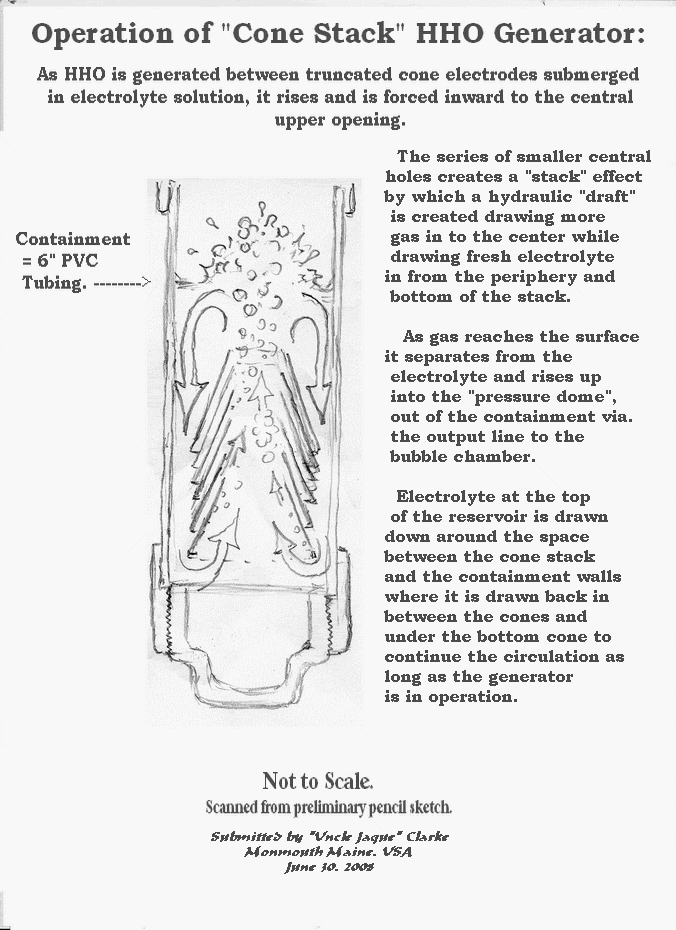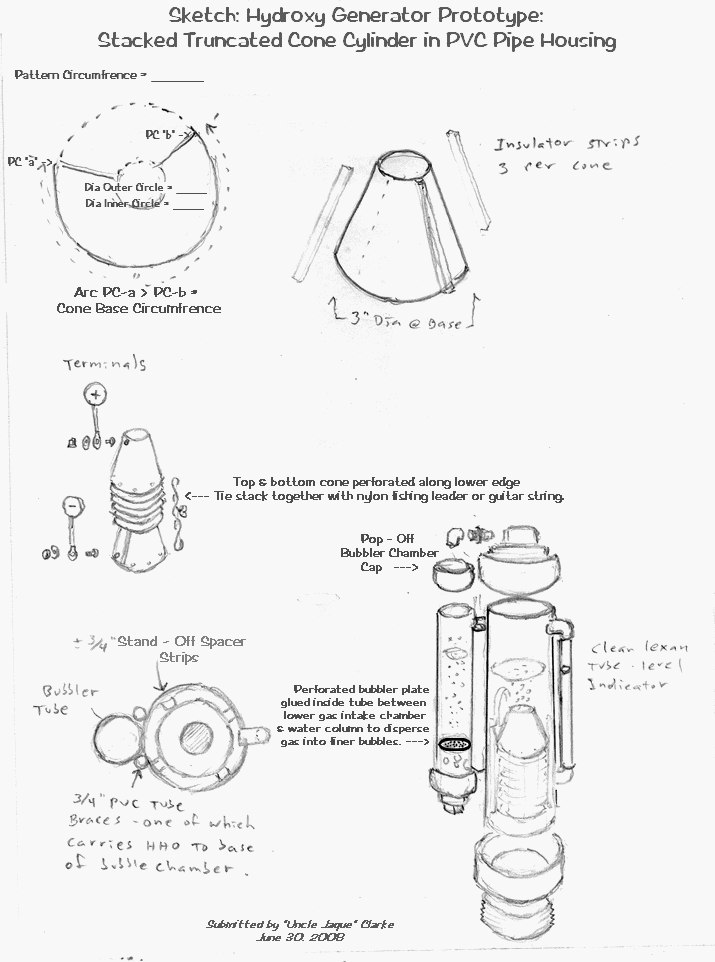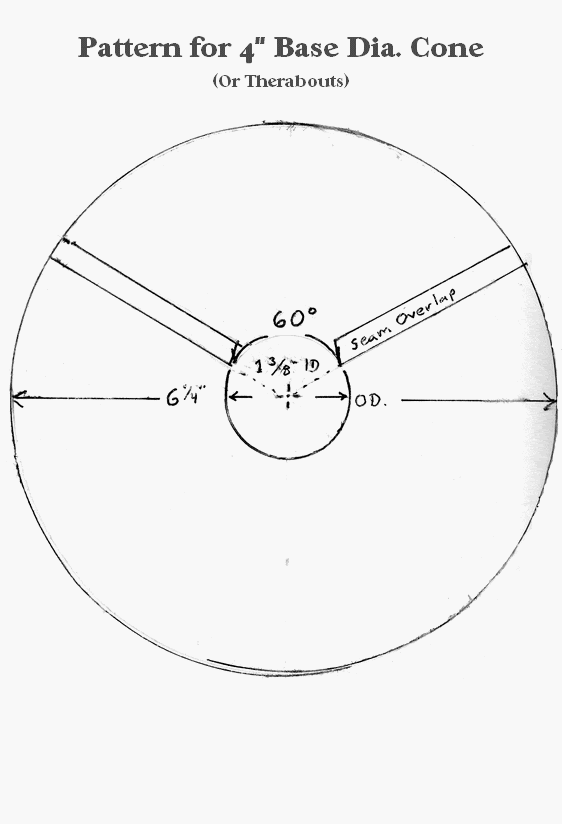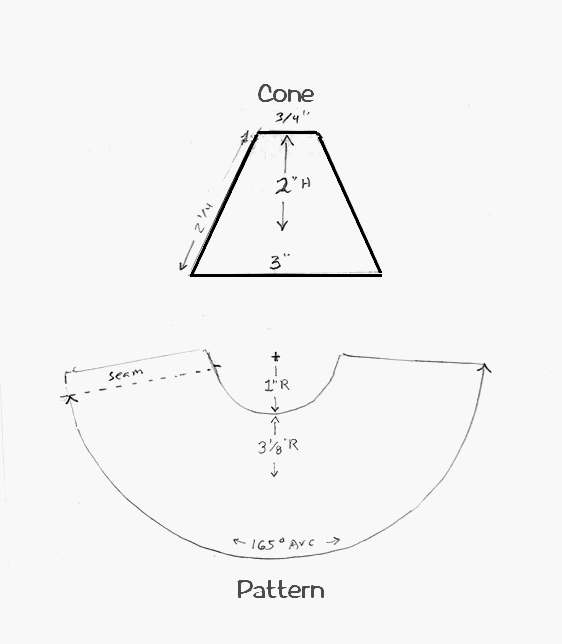A friend out near Idaho knows a rancher running a tractor on 100% water according to his claims. He is using a water cell using cones as the electrodes. He is using dairy creamer separator discs like these:

Kanarev's cell using cones is supposed to be self-polarizing by virtue of the geometry where the top cone is always positive and the bottom is always negative and all the metal is the same.
Does anyone here have any experience with this?
If it is self polarizing and can keep the water molecules polarized, then obviously less input is required and this indeed seems to be the case according to Kanarev's claims. Simply pulsing them periodically, the gas production continues as the power is off way more than on.
ELECTROLYTIC CELL OF LOW-AMPERE ELECTROLYZER FOR PRODUCTION OF HYDROGEN AND OXYGEN FROM WATER
RU2227817
( 4-27-2004)
KANAREV F M; PODOBEDOV V V; TLISHEV A I

Classification: - international: C25B1/04; C25B9/06; C25B1/00; C25B9/06; (IPC1-7): C25B1/04; C25B9/0
Abstract ~ Physico-chemical technologies for production of hydrogen and oxygen from water. SUBSTANCE: proposed electrolytic cell has taper housing made from current-conducting material and used as cathode, additional taper electrodes and taper cover made from current-conducting material and used as anode. Cylindrical bases of housing, additional electrodes and cover have circular recesses for dielectric rings. Housing, additional electrodes and cover are connected by means of bolts inserted into holes in cylindrical bases. Insulation between anode, additional electrodes and cathode is insured by dielectric rings, dielectric washers and dielectric bushes. Solution is fed from reservoir to inter-electrode space through passage. Gases escape through branch pipe. Proposed cell may be used for polarization of ions of solution and water molecules in horizontal and vertical planes, thus forming positive potential on anode and negative potential on cathode before connecting the cell to electric circuit; process of separation of gases continues after disconnection of cell from circuit. EFFECT: considerable reduction of power requirements for decomposition of water.
DEVICE FOR PRODUCTION OF HYDROGEN AND OXYGEN
RU2232829
( 7-20-2004 )
KANAREV F M (RU); PODOBEDOV V V (RU); TLISHEV A I (RU); PEREKOTIJ G P (RU); KORNEEV D V (RU); BEBKO D A (RU)

Classification: - international: C25B1/04; C25B1/00; (IPC1-7): C25B1/04
Abstract ~ Physico-chemical technologies of hydrogen and oxygen production. SUBSTANCE: the invention is dealt with the physico-chemical technologies of production of hydrogen and oxygen. The device has a cylindrical body manufactured of a dielectric material, an interelectrode chamber, a cathode with a conical outer surface, with a lower branch-pipe and an axial aperture for feeding a solution, an anode with a conical inside surface and the upper branch-pipe and an axial aperture for gases exit. The body has the hollow electrodes of a conical form inserted into it and having axial apertures, diameters of which are step by step increasing in direction from the cathode to the anode. The electrodes are isolated from each other by seal dielectric rings. The technical effect is production of hydrogen and oxygen using a low-amper electrolytic decomposition of water and decreased power input. EFFECT: the invention allows to produce hydrogen and oxygen using a low-amper electrolytic decomposition of water and to decrease power input.

Kanarev's cell using cones is supposed to be self-polarizing by virtue of the geometry where the top cone is always positive and the bottom is always negative and all the metal is the same.
Does anyone here have any experience with this?
If it is self polarizing and can keep the water molecules polarized, then obviously less input is required and this indeed seems to be the case according to Kanarev's claims. Simply pulsing them periodically, the gas production continues as the power is off way more than on.
ELECTROLYTIC CELL OF LOW-AMPERE ELECTROLYZER FOR PRODUCTION OF HYDROGEN AND OXYGEN FROM WATER
RU2227817
( 4-27-2004)
KANAREV F M; PODOBEDOV V V; TLISHEV A I

Classification: - international: C25B1/04; C25B9/06; C25B1/00; C25B9/06; (IPC1-7): C25B1/04; C25B9/0
Abstract ~ Physico-chemical technologies for production of hydrogen and oxygen from water. SUBSTANCE: proposed electrolytic cell has taper housing made from current-conducting material and used as cathode, additional taper electrodes and taper cover made from current-conducting material and used as anode. Cylindrical bases of housing, additional electrodes and cover have circular recesses for dielectric rings. Housing, additional electrodes and cover are connected by means of bolts inserted into holes in cylindrical bases. Insulation between anode, additional electrodes and cathode is insured by dielectric rings, dielectric washers and dielectric bushes. Solution is fed from reservoir to inter-electrode space through passage. Gases escape through branch pipe. Proposed cell may be used for polarization of ions of solution and water molecules in horizontal and vertical planes, thus forming positive potential on anode and negative potential on cathode before connecting the cell to electric circuit; process of separation of gases continues after disconnection of cell from circuit. EFFECT: considerable reduction of power requirements for decomposition of water.
DEVICE FOR PRODUCTION OF HYDROGEN AND OXYGEN
RU2232829
( 7-20-2004 )
KANAREV F M (RU); PODOBEDOV V V (RU); TLISHEV A I (RU); PEREKOTIJ G P (RU); KORNEEV D V (RU); BEBKO D A (RU)

Classification: - international: C25B1/04; C25B1/00; (IPC1-7): C25B1/04
Abstract ~ Physico-chemical technologies of hydrogen and oxygen production. SUBSTANCE: the invention is dealt with the physico-chemical technologies of production of hydrogen and oxygen. The device has a cylindrical body manufactured of a dielectric material, an interelectrode chamber, a cathode with a conical outer surface, with a lower branch-pipe and an axial aperture for feeding a solution, an anode with a conical inside surface and the upper branch-pipe and an axial aperture for gases exit. The body has the hollow electrodes of a conical form inserted into it and having axial apertures, diameters of which are step by step increasing in direction from the cathode to the anode. The electrodes are isolated from each other by seal dielectric rings. The technical effect is production of hydrogen and oxygen using a low-amper electrolytic decomposition of water and decreased power input. EFFECT: the invention allows to produce hydrogen and oxygen using a low-amper electrolytic decomposition of water and to decrease power input.






Comment